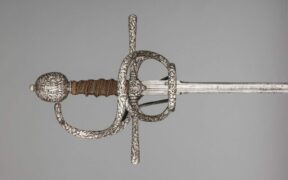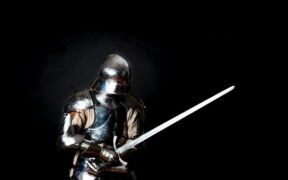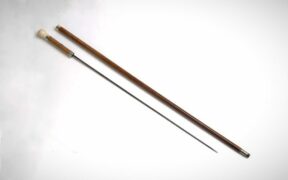Our content features commercial links to our products, committed to transparent, unbiased, and informed editorial recommendations. Learn More
Smallsword 101: Characteristics, Uses, and History
NO AI USED This Article has been written and edited by our team with no help of the AI
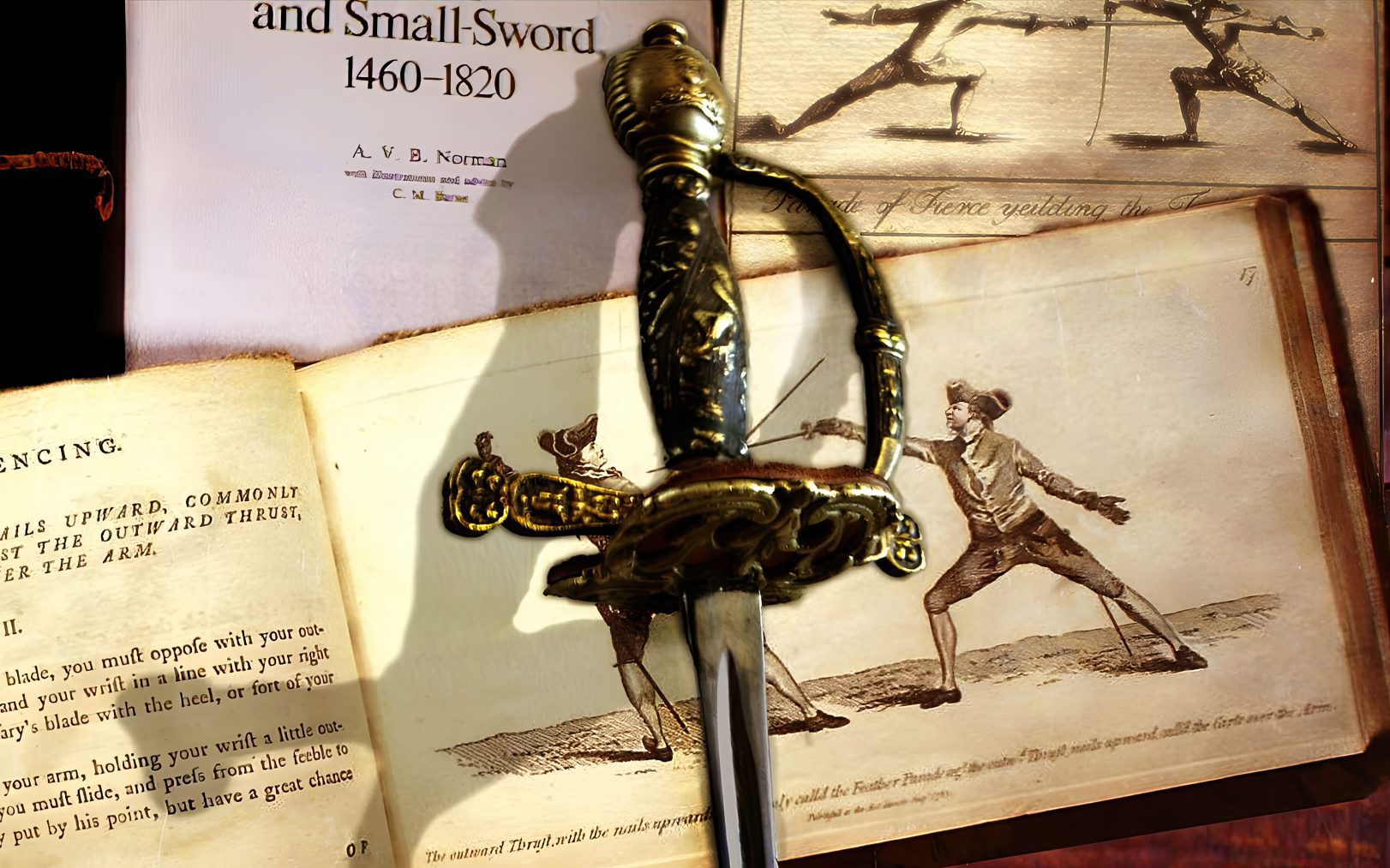
During the Renaissance in Europe, many great swords with compelling and unique designs were made, which were very different from the swords common in the Viking or Medieval times. The Smallsword is a sword that makes people wonder if it is a weapon or a decoration.
The Smallsword inspired Olympic fencing, the most famous sword-fighting sport today. In this article, we’ll find out if the Smallsword was really a dangerous tool or just a showpiece. First, we’ll talk about its features and how they were best used, and then we’ll discuss its history and battle effectiveness.
What is a Smallsword?
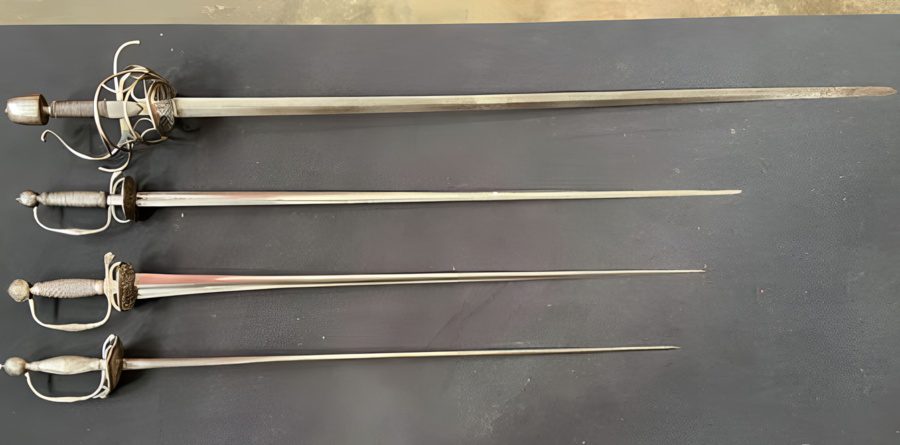
The Smallsword is a bladed-edged weapon from the arsenal of European Swords. It is a separate sword and not just a blade that is smaller in size called a short sword. Some Smallswords are three feet (a meter) long, which isn’t short. The term Smallsword comes before its use in history as there was a longer pointy type of thrusting blade called the Rapier.
Because it came after the Rapier and was smaller, the name Smallsword was used, which was the same case as the Longsword. Longsword is the modern term for the weapon as it was longer than the previously used Arming Sword.
In other languages, the Smallsword is known as a dress sword, court sword, side sword, officer sword, and mourning sword, primarily because it was linked with 18th-century gentlemen’s clothing.
Characteristics of the Smallsword
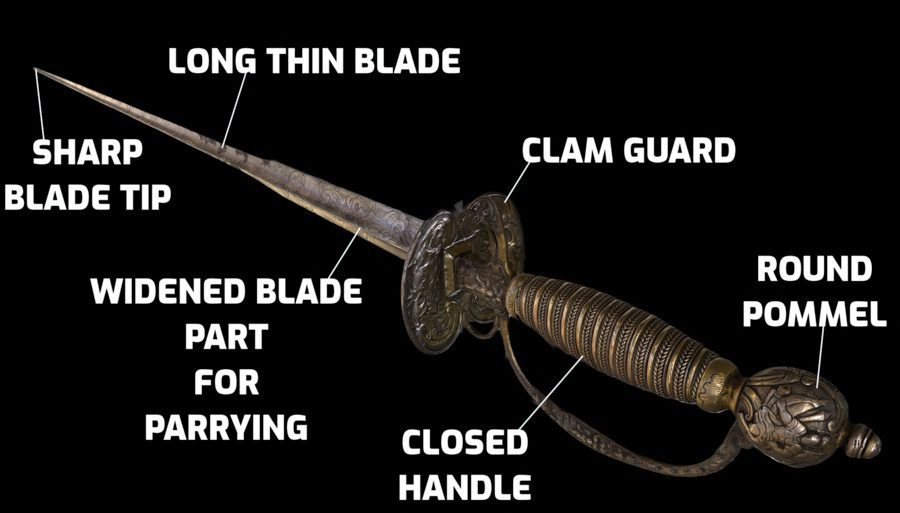
The Smallsword is easily distinguishable from other long and pointed swords, and it has the characteristics of the longer Rapier and the Epee, a non-lethal modern fencing sword. Smallswords come in various shapes and sizes but are generally short in length and have a specific kind of guard and blade that gives them a unique feel.
Blade
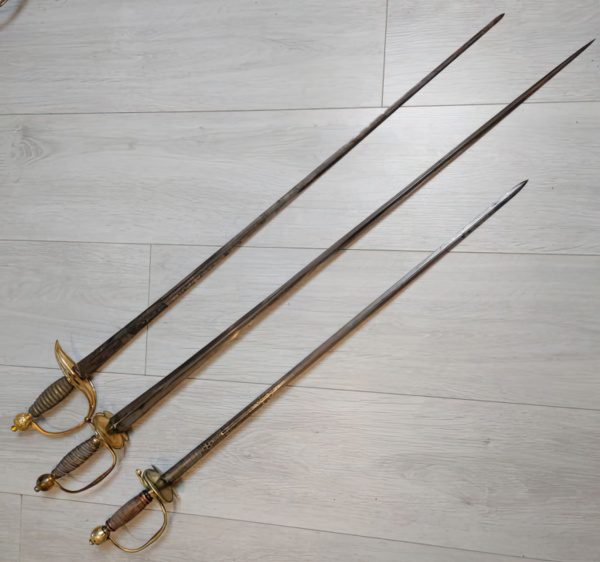
One of the Smallsword’s most interesting features is its blade, which is straight and very thin and tapers towards a sharp tip starting from the guard. The material can be made of high carbon steel for piercing, or stainless steel if it is a decorative piece. The most common length for the Smallsword blade is between 23 to 33 inches (60 to 85 cm).
As with the Rapier, the Smallsword’s blade is made to be flexible and light. The main difference is that the Smallsword usually has a razor-edge sharp tip while the edges remain unsharpened. Some blades can have colichemarde steel, a large and broad ricasso section used for parrying, and then starts to taper after the middle point of the blade.
The Smallsword blade typically has a trefoil, rhombic, spindle, or triangular cross-section, enhancing the blade’s thrust while also looking aesthetically pleasing. Most of the time, the blade can be heavily ornamented and engraved.
Guard
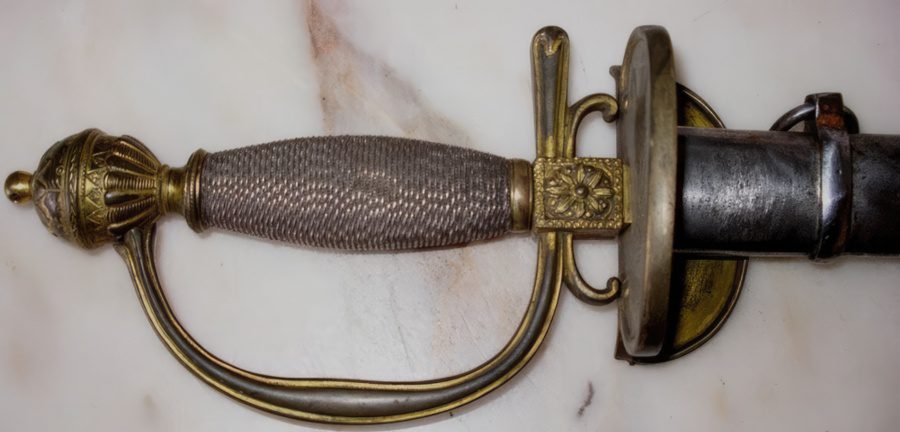
The sword guard is the metal piece used to protect the user’s hand, which allows for powerful attacks without the fear of injury. Some believe that this type of guard is why the sword evolved as it did. The guard of the Smallsword can also be heavily ornamented and decorated.
Usually, the guard of the Smallsword is a shell type, a larger two-lobed metal piece. One of these pieces is on top of the handle, while the other is bent, extends from the handle, and turns toward the blade. Some Smallswords feature a single disc-shaped guard and more traditional Rapier-like features like the quillons, straight small crossguard, hook quillon, and a bell guard seen on the later Epee fencing swords.
A typical type of guard seen on a Smallsword is the knuckle guard, a metal piece extending from the top of the handle to the pommel.
Handle

The handle of the Smallsword is straight and usually widened at its center to allow for a better grip. It is a protected and closed handle with a D-shaped knuckle guard metal piece that protects the user’s hand from the enemy’s weapon. A common handle length of the Smallsword is between four to six inches (10 to 15 cm).
The handle is meant to be used with one hand, and its small quillons surrounding it allow for a versatile number of uses. The handle can be made of wood and placed over the full tang blade that extends through it and ends at the pommel. Some decorative Smallswords feature full handles made out of silver, and most feature a thin or broad wire grip.
One of the most decorated pieces of the Smallsword is the handle, and it often takes various forms, which may be pleasing to the eye but threatens its usefulness.
Pommel
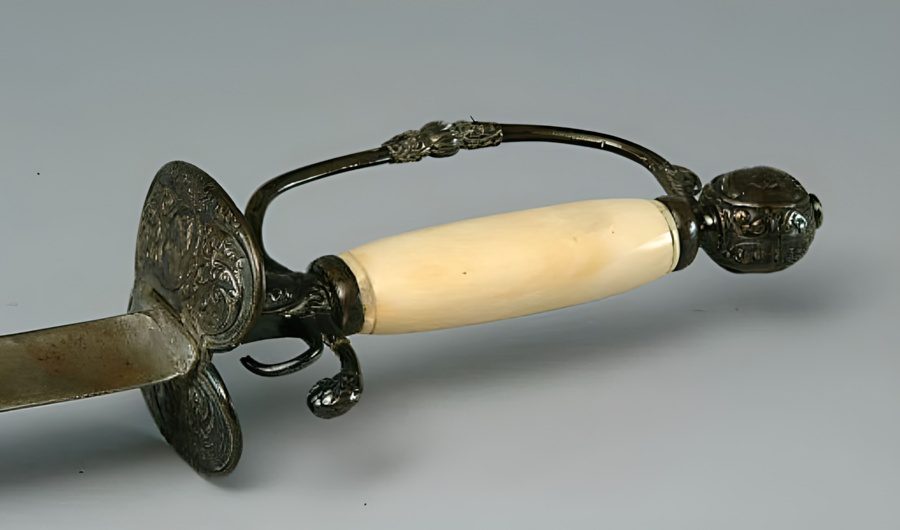
The pommel is the metal piece used as a counterweight for the Smallsword, and it is placed under the handle, holding the full-tang blade in place. The Smallsword pommel is usually round and features a pointed piece made as a decorative element.
Depending on the user’s preference, the pommel can take on many shapes. The round garlic-shaped type of pommel is commonly used, but there are other frequent decorative forms such as a knight’s helmet, curved animal, or human-shaped head.
Scabbard
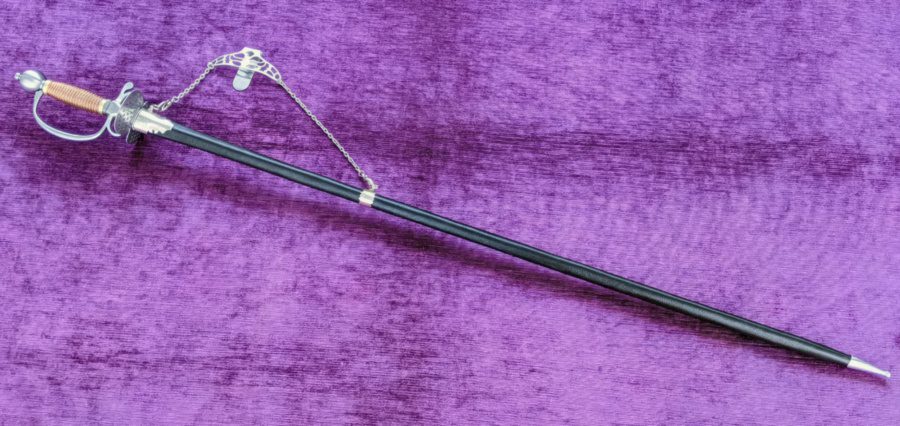
The scabbard is the Smallsword’s placeholder that protects it from the elements when not in use. Smallsword scabbards are straight and thin, sometimes featuring a pointy metal endpiece. There are Smallsword scabbards made of wood and lacquered or covered with leather in a certain color. Some decorative scabbards are made of metal and can feature rare and precious stones.
Since the Smallsword is part of the gentlemen’s outfit, it can feature the most decorations. A ring-type belt clip is commonly added to it so it can be carried easily while still acting as an eye-pleaser.
Weight
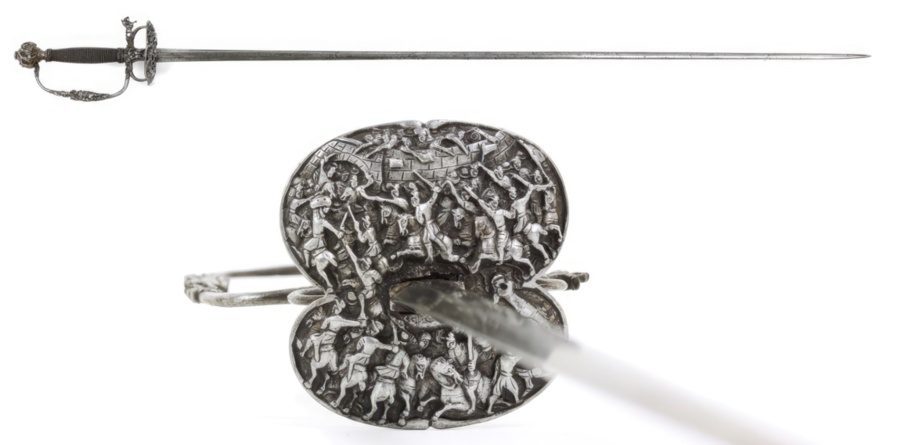
The Smallsword fluctuates in weight depending on the types of decorations, as they can alter. The most common weight of a Smallsword is around 1.5 lbs (0.7 kg), which makes it a very light weapon. The point of balance is on the blade itself and just four inches (10 cm) from the guard.
Size and Length
As one might expect from its name, Smallsword is a fairly short sword. However, there are rare cases in which this type of sword is fairly long and can be the size of a smaller Rapier. The overall length of the Smallsword is from 27 to 43 inches (70 to 110 cm) which is the ideal range for a thrusting weapon.
Uses for the Smallsword
The Smallsword is a one-handed weapon that offers very fast and deadly attacks. The key component when using the Smallsword is footwork, dexterity, and precision, as seen in various historical manuals. These manuals all emphasize a well-timed attack and counter-attack that can prove lethal when fighting an unarmored enemy.
Ceremonial and Dress Sword
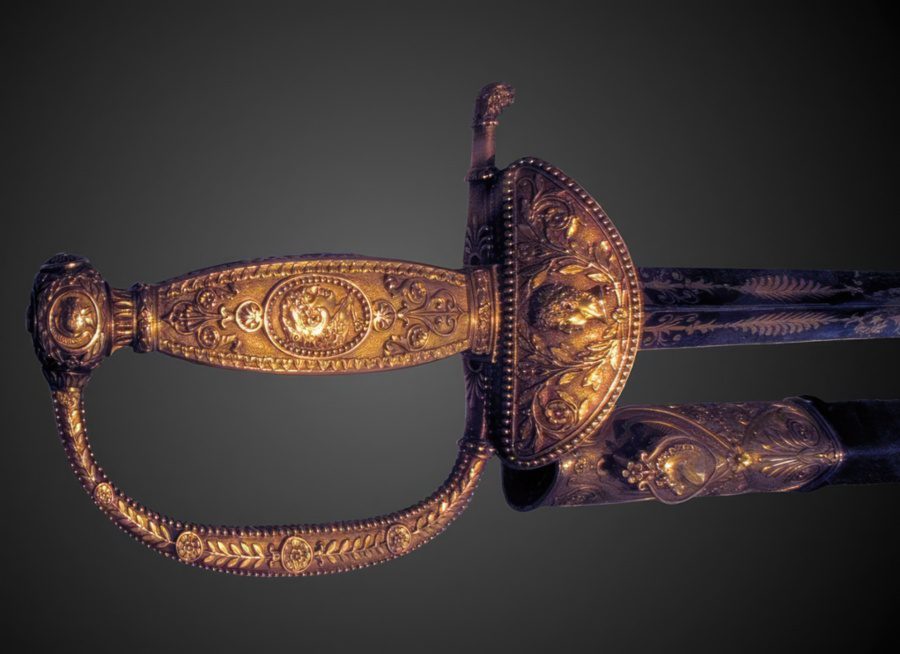
Ceremonial is the most well-known use for the Smallsword that survives today in some European countries. Highly decorated Smallswords with various rare precious metals are seen in ceremonial events, with certain military promotions, or as part of signifying one’s nobility. French General Napoleon was known for carrying a Smallsword.
This ceremonial use comes from the sword’s past, which was to act as a dress sword. It replaced the long Rapier as the main side sword because of its shorter design while still being useful as a combat tool. No proper gentleman or person of suitable rank would be dressed without his sword, even when the rifle was the primary weapon of choice.
Fencing and Dueling
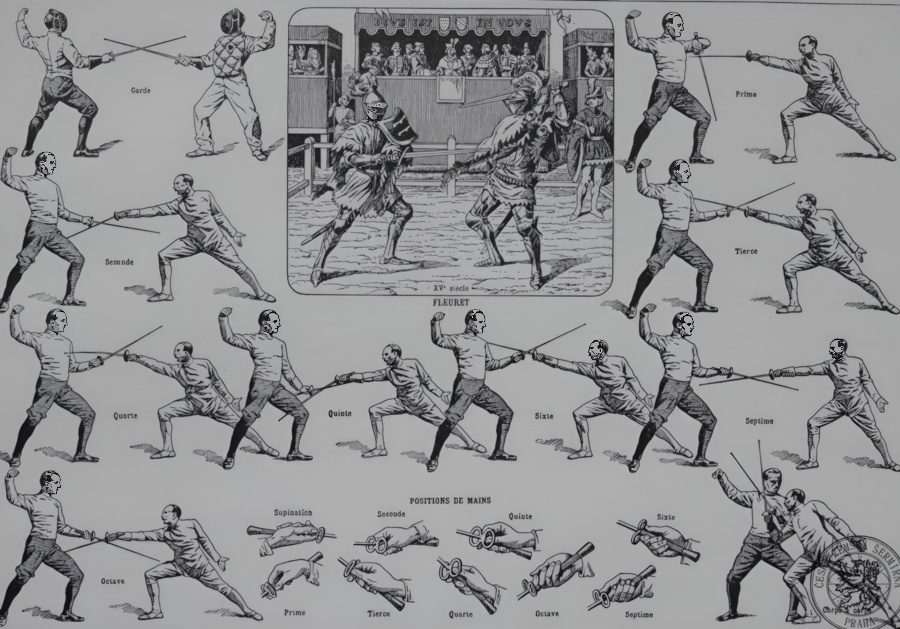
The Smallsword is often referred to as a dueling sword because the Rapier was heavier, and there was a need for a lighter dueling weapon. The gradual creation of something smaller than the Rapier led to the design of the Smallsword, which substantially took over the main dueling position of the previously used Rapier.
There are many different historical manuals about how to use the Smallsword effectively in a duel. With time, the dueling of the Smallsword led to the creation of many different rules that changed the destructive element of these duels. Today the same style of Smallsword fencing is used in Olympic Fencing using the Epee or Foil sword.
Defensive and Combat
The Rapier and Sidesword, along with the Smallsword, were used as a means for defending the civilians. They could be carried easily at a person’s side. Although it may have been shorter, the Smallsword was still effective at fighting an unarmored opponent. Being a defensive type of weapon meant that this sword wasn’t only linked with duels. Historical manuals suggest using the Smallsword with sneak attacks, such as throwing sand at the enemy or blinding them with a torch. While some folks carried the Smallsword as a status symbol, some had it battle ready at all times.
History of the Smallsword
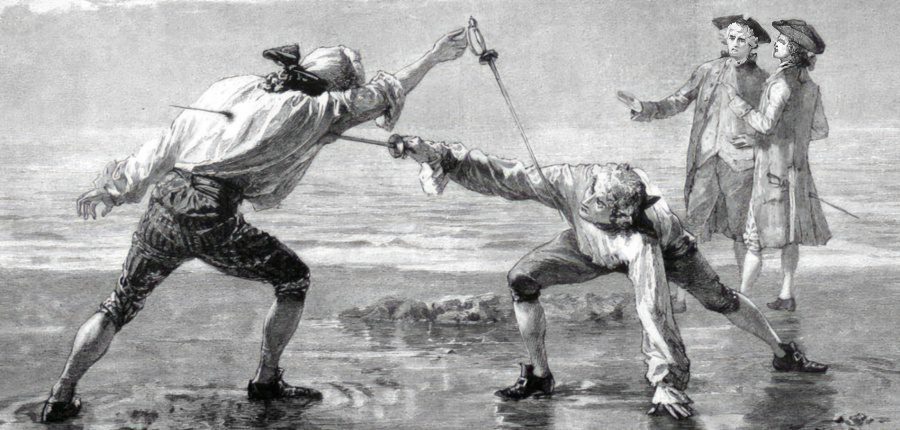
The Smallsword is a sword or bladed-edged weapon that evolved from the Rapier blade but was smaller, less cumbersome, and lighter in its composition. It is believed that the prototype of the weapon came from 17th-century France and spread quickly throughout Europe.
The style of fencing and sword dueling was a highly popular art linked with nobility and prestige throughout Western Europe. The Smallsword satisfied the need for a lighter sword used for self-defense while appeasing the eye. The sword’s popularity and its fighting manuals spread like wildfire across the continent, replacing the desire for the Rapier.
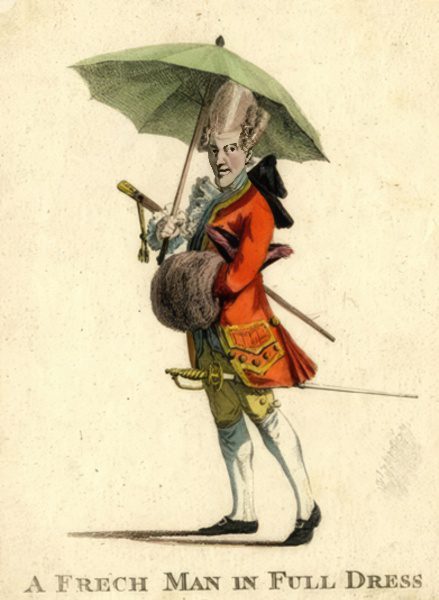
Smallswords were sometimes used as a defensive tool but mostly played a part in a gentlemen’s uniform. The dueling aspect of the weapon introduced many rules based on getting points without critically injuring your opponent. The Smallsword is the direct influence of the modern Olympic style of fencing, and its style is still used today with épée-blades.
Officers still used smallswords during World War Two, as seen in some American bayonet drills. Today the Smallsword is the most popular blade in LARP (live-action role play) events and one of the best swords for beginners of HEMA (historical European martial arts) fighting and training.
